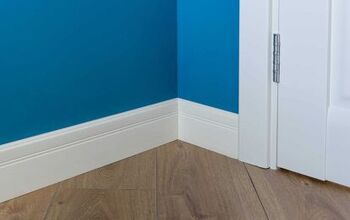How To Make A Small Space Feel Bigger

According to recent data, the average new home size in the US is 2,485 square feet (much larger than approximately 50 years ago). However, interestingly enough, over the past several years, the size of new homes has been shrinking.
But what if you live in an even smaller space, like a studio apartment or a modest 1,200-square-foot home? How can you make a small space feel bigger without sacrificing form and function?
Using a lighter color scheme, paring down belongings, and getting clever with storage help a small space seem larger. Trick the eyes with mirrors that bounce light around the room, making the area feel more spacious. Strategic furniture choices and placement, sheer window treatments, and smart decor choices also add to the illusion of more space.
If you live in a smaller home or apartment or simply want to make your tiny bedroom feel larger, you don’t need to knock down walls. Try these simple tips for making a small space feel bigger.
15 Simple Steps For Making Your Small Space Feel Bigger
Intentional choices about furniture, home accessories, and your design layout will work wonders for a small space. Be thoughtful about the things you bring into your home and where you choose to place them. Use this list of tips as a guide to making the most of a cozier-sized room.
1. Use Reflective Colors
You might hear a lot of suggestions about painting everything white to make a space feel bigger. However, this all-white look doesn’t necessarily make things feel bigger so much as it makes things feel boring. It’s okay to use other colors in your small space.
However, opt for lighter, reflective colors that will help bounce light around the room. Mix some soft, bright blues with white, or try a monochromatic color scheme featuring various light shades from the same color family.
2. Accessorize With Mirrors
There’s a right way and a wrong way to use mirrors in a space. Long gone are the days of mirrored walls that make your living area look like a dance studio. But that doesn’t mean mirrors aren’t an effective design tool.
Hang some decorative mirrors on a wall or place one in the corner of your room to help bounce light throughout the space. The mirrors multiply the natural light in the room, making things look and feel bigger.
3. Limit Flat Surfaces
Have you ever noticed that clutter seems to attract more clutter? When you toss your keys and mail onto your entry table, it suddenly gives everyone a free pass to drop everything in the same spot. Pretty soon, you end up with sunglasses, wallets, a random toy car, and everything else under the sun littering your console.
Flat surfaces tend to be clutter magnets. Think about your sofa end tables, the nightstands in your bedroom, the kitchen table, and the side table in the hall. What items typically end up on top of these furniture pieces?
Look around the space and carefully consider the number of flat surfaces in the room. Are all of them necessary? If not, remove one or two pieces. The rewards are two-fold; you free up valuable floor space, plus you’ll have fewer places to collect clutter.
4. Edit Down Your Home Decor
Let’s face it; we live in a world with a more is better mentality. Therefore, you might think nothing of filling your home to the brim with all sorts of decorative items. After all, those knick-knacks lining the shelves at Homegoods are too cute to pass up, right?
But the result usually ends up as rooms feeling a bit too cluttered and overdone. So, scan the room and pay attention to the amount of decor in the space. Remove about 25% of the accessories, whether picture frames, vases, statues, or other random tchotchkes. After doing so, not only will the room feel bigger, but you likely will feel better too.
If things still seem a bit overstuffed, remove another 25%. It helps to work in baby steps if you struggle with letting go of things. But the more you let go of, the easier it will be to breathe.
5. Try A Large Statement Art Piece
When you’re working with a small space, you might assume you should keep everything in it small. However, this isn’t always the case. One larger item often takes up less visual space than a bunch of smaller ones.
This concept is especially true for artwork. Instead of creating a gallery wall with a bunch of individual small pieces, choose one large statement piece. It helps create a focal point in the space.
If at all possible, position the piece on the wall opposite the room’s entry. This placement draws the eye across the room, instantly providing the illusion of a larger area.
6. Opt For Double-Duty Furniture
Every bit of space counts when you’re designing a small room. Choose furniture that serves multiple purposes. For example, get a storage ottoman that doubles as a coffee table, or buy a sofa or a bed with built-in drawers.
A search for multi-functional furniture will lead you to a bunch of possibilities. You’ll find sofas that turn into beds, bookcases that convert to dining tables, and entry consoles that store shoes. As previously mentioned, it’s all about being intentional when you choose the furniture for your small space.
7. Maximize Vertical Space
If you don’t have a lot of surface and floor space to work with, maximize the vertical space. Consider a tall backless shelving unit with glass shelves. The backless design and clear shelves help keep the taller piece from becoming too overbearing.
Install a simple shelf above the door frame to tuck away extra storage. You can store a few items in decorative baskets where they’ll hardly be noticed.
Another way to maximize your vertical space is to draw attention to it with your design choices. Hang curtains as close to the ceiling as possible and run them to the floor. This trick gives the illusion of taller ceilings, which helps add visual space to the room.
8. Declutter And Pare Down Non-Essentials
Of course, one of the easiest ways to make your small space feel bigger is not to fill every inch with stuff. Go through your belongings and remove things you don’t love, use, or want. Toss trash, donate duplicates, and make some tough decisions.
Decluttering will pay off in the end when you have more breathing room in your space. Plus, it makes it easier to find things, reduces stress, and increases productivity. You don’t waste time and money searching for things or buying items you already have.
9. Use Smaller Scale Furniture
Don’t fill a small room with big, bulky furniture. Opt for smaller-scale, streamlined pieces that work in proportion to the room’s size.
Also, take a hint from tip number five and go with a less is more approach. One larger piece of furniture will often work better in a small space than four small pieces. However, this one larger piece should still be on a smaller scale with clean lines to fit the room size.
10. Don’t Skimp On Lighting
Lighting plays a significant role in how a room feels, functions, and looks. Choose lighting that helps brighten the space, with fixtures that don’t feel too heavy or overbearing. If you don’t have a lot of natural light in the room, add more artificial lighting to fill the gap.
Keep lamp shades sheer instead of opaque, add overhead lighting if there isn’t any, and be alert for dark corners. If there are dark spots when you have all the lights on, fill these spaces with a floor lamp (if it won’t make things too crowded) or reposition existing fixtures. If the room is still incredibly dark, it’s worth calling an electrician to install overhead options.
11. Bring Furniture Away From The Walls
People often fall into the trap of putting all their furniture against the walls assuming it will make the room feel bigger. The theory is if you have a more open wide floor area in the center of the room, it will look larger.
However, this actually does the opposite and makes a room feel smaller. Instead, bring your furniture off the walls. For example, define the seating area with a large area rug and leave space around the furniture. This surrounding space will make the room feel larger than it actually is.
12. Get Clever With Hidden Storage
Making a small space more functional undeniably has challenges, but it can also be fun. Living in a small space encourages you to think outside the box and get creative, especially about storage.
Multi-functional furniture pieces can provide some hidden storage, but the options don’t stop there. Carve out space in the walls to add shelving between wall studs. Hang a picture in front of the shelves to turn it into a cool, secret storage area.
Use bins in a cubby shelf to stow away kids’ toys, blankets, and other items, so they stay out of sight. Keep TV remotes in a decorative basket with a lid on the coffee table to reduce visual clutter.
13. Go With Sheer Window Treatments
Avoid blocking any natural light in your small space as much as possible. Opt for sheer window treatments instead of blackout options. If you need the room to be completely dark at times, hang blackout curtains, but keep them open and hang sheers as well.
This method allows you to have privacy when you need it without blocking the light. But when you do want things completely dark (for a movie night, perhaps), it’s easy to do.
14. Use Furniture With Legs
Another thing to keep in mind when choosing furniture for a small room is to look for pieces with legs. The legs lift the furniture off the floor, allowing you to see underneath. The more floor your eyes can see, the bigger the room feels.
15. Mix In Clear Furniture
Look for transparent furniture pieces to mix into the space and help lighten things up a bit. Acrylic chairs or tables, glass-top tables, and glass shelves are all possibilities. The see-through features take up less visual space but also help reflect light around the room.
Give Your Small Space Some Breathing Room
Just because you have a small space doesn’t mean you have to feel cramped and crowded. Making intentional choices about your design, including furniture, home accessories, and lighting, will help create the illusion of more space.
Use a few key pieces instead of a bunch of smaller ones, mix in clear options, and choose furniture with legs. Get rid of excessive amounts of stuff to reduce your inventory and free up valuable space. Regularly review your space and edit down extraneous home accessories and random items.
Before you know it, your small room will feel comfortable and more spacious. Remember, ultimately, it’s about how you feel in your space, so if you’re happy, you’ve succeeded.
Related Guides:

Stacy Randall is a wife, mother, and freelance writer from NOLA that has always had a love for DIY projects, home organization, and making spaces beautiful. Together with her husband, she has been spending the last several years lovingly renovating her grandparent's former home, making it their own and learning a lot about life along the way.
More by Stacy Randall



























